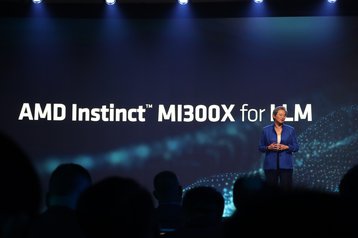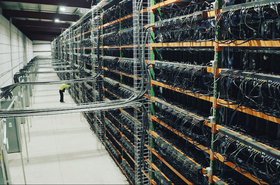AMD’s data center revenue for Q4 2024 missed analysts' expectations, despite being up 69 percent year-on-year (YoY).
Revenue for the segment totaled $3.86 billion for the quarter, a fractional increase on the $3.5bn AMD reported in data center revenue for Q3 2024 and well below analyst’s predictions of $4.14bn.
AMD’s total FY2024 data center revenue increased 94 percent to $12.6bn, of which $5bn was from the sale of its Instinct AI GPUs. As with the previous quarter, the company said the segment growth was primarily driven by growing demand for Instinct and AMD Epyc CPUs.
Overall, AMD posted record fourth-quarter and full-year revenue, with the figures totaling $7.7bn for Q4 and $25.8bn for the full financial year. The company said it expects revenue of $7.1bn in Q1 2025, plus or minus $300 million.
Speaking during an earnings call after the results had been posted, AMD CEO Dr. Lisa Su said its data center segment contributed roughly 50 percent of the company’s annual revenue, as “Instinct and Epyc processor adoption expanded significantly with cloud, enterprise, and supercomputing customers.”
She continued that 2024 was also an “outstanding year” for AMD’s data center AI business, with the company accelerating its AI hardware road map “to deliver an annual cadence of new Instinct accelerators, expanded our ROCm software suite with significant uplifts in inferencing and training performance.”
Referencing high-performance computing (HPC) projects the company has been involved with, Su said AMD now powers five of the 10 fastest and 15 of the 25 most energy-efficient systems in the world, including the world’s current fastest supercomputer, El Capitan, which contains 43,808 AMD 4th Gen Epyc 24C Genoa CPUs and 43,808 AMD Instinct MI300A GPUs. More recently, the University of Stuttgart launched its Hunter supercomputer, which also uses MI300As.
Turning to the company’s cloud partners, Su also noted that Meta exclusively used MI300X to serve their Llama 405B frontier model, while Microsoft is using MI300X to power multiple GPT 4-based Copilot services.
“In Cloud, we exited 2024 with well over 50 percent share at the majority of our largest hyperscale customers,” Su said. “Hyperscaler demand for Epyc CPUs was very strong, driven by expanded deployments powering both their internal compute infrastructure and online services. Public cloud demand was also very strong with a number of Epyc instances increasing 27 percent in 2024 to more than 1,000.”
Looking ahead to 2025, Su said AMD had begun volume production of MI325X in the fourth quarter, while samples of its forthcoming MI350 series – a product Su said would address a broader set of workloads, including both inference and training – are expected to reach customers in Q1 2025, with the company on track to accelerate production shipments to mid-year.
She added that AMD also has new designs on both MI300 and MI325 that would be deployed in the first half of 2025.
Responding to a question about how AMD’s data center business might look in 2025, Su said the company expects the segment to grow by strong double digits across both the server product line and the data center GPU product line.
“Overall, I think we are very pleased with the trajectory of the data center business in both 2024 and then going into full year 2025.“







